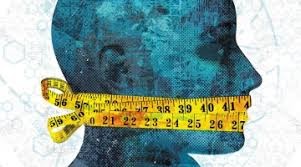
Over the years, society’s vision of ideal beauty and weight has evolved. In the Renaissance era, a heavier weight was viewed as the optimum form of beauty and attraction as it implied that someone was of higher economic standing. In the 1960s, Twiggy hit the model scene, and a thin, petite body type was seen as desirable. Today, in-shape and curvy female models and male models with abs are plastered across shopping malls and clothing magazines. Whatever the year, society’s envied body type results in many people feeling like their weight/shape isn’t being represented or is a taboo subject. In 2016 alone, approximately 1.9 billion adults were considered overweight, and 650 million of those were diagnosed as obese. Part of the reason these topics are so taboo is because people struggle to understand it. How does obesity actually work in the brain? Is it a mental disorder? Is it genetic or environmental? There are so many complex questions on the topic of obesity, but the neurochemical basis allows a deeper insight to these.
Inside the Brain
A key area in the brain that is involved in obesity is the hypothalamus. The hypothalamus is involved in a variety of neuroendocrine functions and works to maintain the body’s energy balance, feeding behavior, and can respond to stress levels. It’s suggested that inflammation of the hypothalamus could be related to major changes in these areas. The hypothalamus keeps metabolic homeostasis by balancing how much energy is expended and the level of food intake.
Three hormones, leptin, ghrelin, and insulin are involved in creating a balance between stimulating hunger and feeling full through signaling cascades. Leptin, is a starvation hormone, and tells the brain when there is enough energy stored and you are full; this lowers food intake. Ghrelin, is a hunger hormone, which signals when there is not enough energy and increases food intake. Leptin works through a JAK-STAT pathway; the hormone leptin binds to a leptin receptor in the brain and activates STAT, which is involved in protein transcription. STAT can stimulate the POMC protein, which suppresses hunger, or it can inhibit the AgRP protein, which increases hunger. Ghrelin works in the opposite way and stimulates AgRP to create that same feeling of hunger.
 https://www.ncbi.nlm.nih.gov/pmc/articles/PMC5199695/
https://www.ncbi.nlm.nih.gov/pmc/articles/PMC5199695/
So, where does insulin come into this? When the insulin hormone binds to the the insulin receptor and activates the proteins IRS1, Grb2, SOS, PI3K, and Akt. Akt goes on to stimulate FOXO1 and this directly interacts with the leptin signaling cascade by inhibiting STAT so the body can feel satiety. In obesity though, when the hypothalamus is inflamed, FOXO1 is phosphorylated by Akt and is kicked out of the nucleus, meaning it can’t inhibit STAT. This means that food intake is increased and that feeling of satiety is lost.
Preventative Measures
Now that we know how inflammation of the hypothalamus leads to overweight or obesity through the neurochemical pathways, can this be prevented? There is a lot of research surrounding the relationship between high-fat diets and inflammation, even during pregnancy. This begs the question, can pregnant mothers maintain a lower-fat diet to decrease the chance of an inflamed hypothalamus in their children? Recent research on preventing or managing weight loss has also brought up the idea of dietary supplements, specifically Whey Protein Isolate. These supplements work to lower body weight and manage a lower weight by simulating a feeling of fullness through activation of the leptin hormone and inhibition of the ghrelin hormone. The Whey Protein Isolate showed significantly reduced levels of proinflammatory cytokines, decreasing the inflammation in the hypothalamus. These are all relatively recent research studies but the expanding knowledge on the obesity topic suggests society is headed in the right direction to understanding more about how weight is controlled neurochemically.
References: